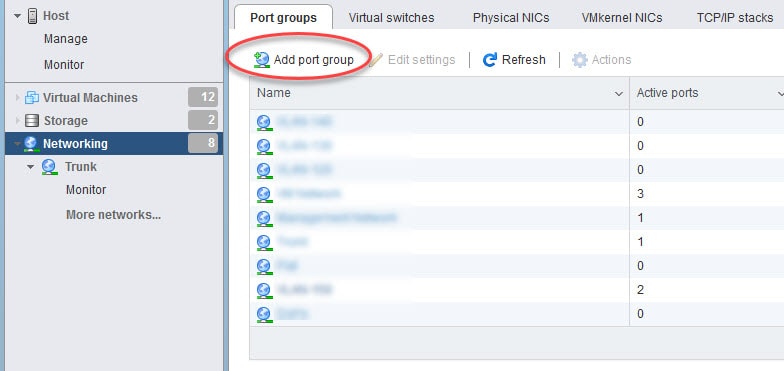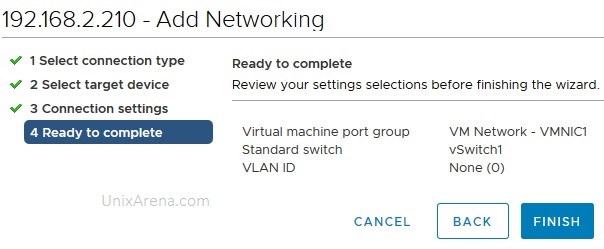

- #VMWARE 6.0 CREATE VLAN GROUP STANDARD SWITCH HOW TO#
- #VMWARE 6.0 CREATE VLAN GROUP STANDARD SWITCH PLUS#
#VMWARE 6.0 CREATE VLAN GROUP STANDARD SWITCH HOW TO#
Controlling how Ansible behaves: precedence rules Category: How to vSphere vSphere 6.0 vSphere Standard Switch Tags: vSphere Standard Switch About Nisar Ahmad Systems Engineer, double VCP6 (DCV & NV), 5 x vExpert 2017-21, and the owner of My Virtual Journey, with experience in managing a Datacenter environment using VMware and Microsoft Technologies.Collections in the Theforeman Namespace.Collections in the T_systems_mms Namespace.Collections in the Servicenow Namespace.Collections in the Purestorage Namespace.Collections in the Openvswitch Namespace.Collections in the Netapp_eseries Namespace.Collections in the Kubernetes Namespace.Collections in the Junipernetworks Namespace.Collections in the F5networks Namespace.Collections in the Containers Namespace.Virtual Guest Tagging (VGT): Requires setting a VLAN ID of 4095 on a vSphere Standard Switch. Virtual Switch Tagging (VST): Requires setting a VLAN ID on the port group (Standard or Distributed) or dvPort. Collections in the Cloudscale_ch Namespace External Switch Tagging (EST): Requires no VLAN ID to be configured on the port group (Standard or Distributed).Collections in the Chocolatey Namespace.Collections in the Check_point Namespace.Virtualization and Containerization Guides.

Select the vMotion VMkernel and click Edit > On the General tab uncheck everything but "vMotion" and set the appropriate VLAN ID > Go to the IP Settings tab > Enter the appropriate IP address and subnet information and click OK. As an example, to modify the IP address and VLAN information to the correct network on a standard switch do the following:įrom the vSphere Client select the ESXi host and go to Configuration > Networking > On the vSwitch that contains the vMotion VMkernel select Properties. The name of the distribute vSwitch to create or remove. If set to absent and the Distributed Switch exists, the Distributed Switch will be deleted. If the vMotion port group is not on an isolated VLAN and/or is routable to systems other than ESXi hosts, this is a finding.įor environments that do not use vCenter server to manage ESXi, this is not applicable.Ĭonfiguration of the vMotion VMkernel will be unique to each environment. If set to present and the Distributed Switch does not exist, the Distributed Switch will be created. If a network has only switches and no routers, that network is considered one broadcast domain, no matter how. This will effectively makes a port group as a VLAN trunk port. VLAN 4095 is special VLAN ID reserved for GVT. Configure the load balancing policy as per the network configuration. If you are using vNetwork Standard Switch, you will need to configure a Port Group for VLAN 4095. Ensure that the distributed switches port groups have VLANs tagged if the physical. If long distance or cross vCenter vMotion is used the vMotion network can be routable but must be accessible to only the intended ESXi hosts. Configuring Standard vNetwork Switch for GVT.

From the vSphere Client select the ESXi host and go to Configuration > Networking and review the VLAN associated with the vMotion VMkernel(s) and verify they are dedicated for that purpose and are logically separated from other functions. So let’s create 4 different Port Groups with the appropriate VLAN Tags. The check for this will be unique per environment. Create the appropriate Port Groups on the Standard Virtual Switch Let say you had four types of networks: Mgmt (vlan 100), vMotion (vlan 101), NFS (vlan 102), and VM (103). The vMotion VMkernel port group should in a dedicated VLAN that can be on a common standard or distributed virtual switch as long as the vMotion VLAN is not shared by any other function and it not routed to anything but ESXi hosts. VMware vSphere ESXi 6.0 Security Technical Implementation Guide This network must be non-routable to other systems preventing outside access to the network. VMotion traffic must be sequestered from production traffic on an isolated network. They might also potentially stage a MiTM attack in which the contents are modified during migration. It was the first switch type available in VMware vSphere. This is your basic virtual switch, also known as a vSwitch. vSphere Standard Switch / Standard vSwitch / vSwitch.
#VMWARE 6.0 CREATE VLAN GROUP STANDARD SWITCH PLUS#
Potential attackers can intercept vMotion traffic to obtain memory contents of a virtual machine. vSphere Standard Switch vSphere Distributed Switch (Requires vSphere Enterprise Plus licencing) Let’s take a look at each virtual switch and its characteristics. The security issue with vMotion migrations is that information is transmitted in plain text, and anyone with access to the network over which this information flows can view it.


 0 kommentar(er)
0 kommentar(er)
